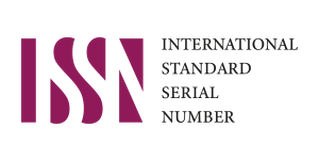Online Submissions
Already have a Username/Password for Jambura Journal of Chemistry?
Go to Login
Need a Username/Password?
Go to Registration
Registration and login are required to submit items online and to check the status of current submissions.
Author Guidelines
Articles written for Jambura Journal of Chemistry are mainly in the form of ideas and results of research on the development of science and technology, especially those relating to innovation in scientific research, education and science learning. Manuscripts are typed in Arial, size 11 pts, space between 1,15 lines, space At least 12 pts. Each paragraph begins with a word protruding into 5-6 digits (1 Tab), or about 1.2 cm from the left edge of each column. The paragraph spacing Before and After is 0 pt.size A4 (21 cm × 29.7 cm) of 10 pages (maximum).delivery File can also be done as anattachment e-mail to the address: [email protected].
The author's name for the article is listed without an academic degree and placed below the article title. If the author consists of 4 or more people, which is listed below the article title is the name of the main author; the names of other writers are included in the footnote of the first page of the manuscript. In the case of the manuscript being written by the team, the editor only relates to the main author or writer whose name is listed first. The author is recommended to include an e-mail address to facilitate communication.
Articles are written in Indonesian or English with format essay, accompanied by a title for each part of the article, except for the introduction to the section without the title. The article title is printed in lowercase letters in the middle, with Arial Narrow letters of 16 points. Ranking of section titles is stated with different fonts (all section and sub-section titles are printed bold or bold and italic), and do not use numbers / numbers in section titles.
Systematics of the articles of thought are: title; the name of the author (without an academic degree); abstract (maximum 200 words); keywords; introduction (without title) which contains the background and purpose or scope of the writing; main discussion (can be divided into several sub-sections); concluding statement (suggestion, if any); bibliography (only contains referenced sources).
Reference sources as far as possible are literature published in the last 10 years. Preferred references are primary sources in the form of research reports (including theses, theses, dissertations) or research articles in scientific journals and / or magazines.
Referrals and citations (citation) use enclosed reference techniques (name, year). Inclusion of sources in direct quotations should be accompanied by a description of the page number where the quote originated. It is very stressed to use reference management applications such as "Mendeley" in citations (bibations) andbibliography.
The Reference List is arranged in a manner such as the following example and is sorted alphabetically and chronologically.
Book (Buku)
Hanief, Y. N., & Himawanto, W. (2017). Statistik Pendidikan. Deepublish.
Kotz, J. C., Treichel, P. M., & Townsend, J. (2012). Chemistry and Chemical Reactivity. Cengage Learning.
Santoso, S. (2010). Statistik parametrik. Elex Media Komputindo.
Conference Proceedings
Permanasari, A. (2016). STEM Education: Inovasi dalam Pembelajaran Sains. In Prosiding SNPS (Seminar Nasional Pendidikan Sains) (Vol. 3, pp. 23–34).
Journal Article (Jurnal)
Wood, J., & Donnelly-Hermosillo, D. F. (2019). Learning chemistry nomenclature: Comparing the use of an electronic game versus a study guide approach. Computers & Education, 141, 103615.
Thesis (Skripsi/ Tesis/ Disertasi)
Ariani, S. (2017). Analisis Model Mental Mahasiswa Pendidikan Kimia dalam Memahami Topik Elektrokimia Ditinjau dari Kemampuan Bernalar Ilmiah Mahasiswa. DISERTASI Dan TESIS Program Pascasarjana UM.
Website
Badan Standar Nasional Pendidikan. (2019). Standar Nasional Pendidikan. Retrieved September 21, 2019, from http://bsnp-indonesia.org/standar-nasional-pendidikan/
Procedures for presenting citations, references, tables and images follow the terms conditions and(style) "American Psychological Association 6th edition (APA style)". Indonesian-language articles use the General Guidelines for Improved Indonesian Spelling/ Pedoman Umum Ejaan yang Disempurnakan (Depdikbud, 1987). English-language articles use a standard range.
All texts are reviewed anonymously by peer reviewer (Mitra Bestari) appointed by the editor according to their expertise. The author of the article is given the opportunity to make improvements (revisions) to the script on the basis of recommendations / suggestions from peer reviewer or editor.
Trial checks and edits are done by the editor and / or by involving the author. Articles that have been printed in print can be canceled by editors if they are found to be problematic. The editor is not obliged to return articles that are not loaded.
Everything related to the licensing of quotations or the use of software computer for making manuscripts or other matters relating to intellectual property rights (HAKI) carried out by the author of the article, along with the legal consequences that may arise as a result, are the full responsibility of the article's author.
Jambura Journal of Chemistry charge for the author as follows:
Article Submission : 0.00 – (IDR)
Article Publication : 0.00 – (IDR), If the author request 2 copies of the printed journal, the fee is 150,000 (IDR).
As part of the submission process, authors are required to checking all submission's compliance especially in terms of:
a) This scientific article does not contain elements of plagiarism.
b) This article has never been and is not in the process of publication in other print and electronic media.
Copyright Notice
The Authors submitting a manuscript do so on the understanding that if accepted for publication, copyright of the article shall be assigned to Jambura Journal of Chemistry, Chemistry Department, Universitas Negeri Gorontalo as the publisher of the journal. Copyright encompasses the rights to reproduce and deliver the article in all form and media, including reprints, photographs, and any other similar reproductions, as well as translations.
Privacy Statement
The names and email addresses entered in this journal site will be used exclusively for the stated purposes of this journal and will not be made available for any other purpose or to any other party.





